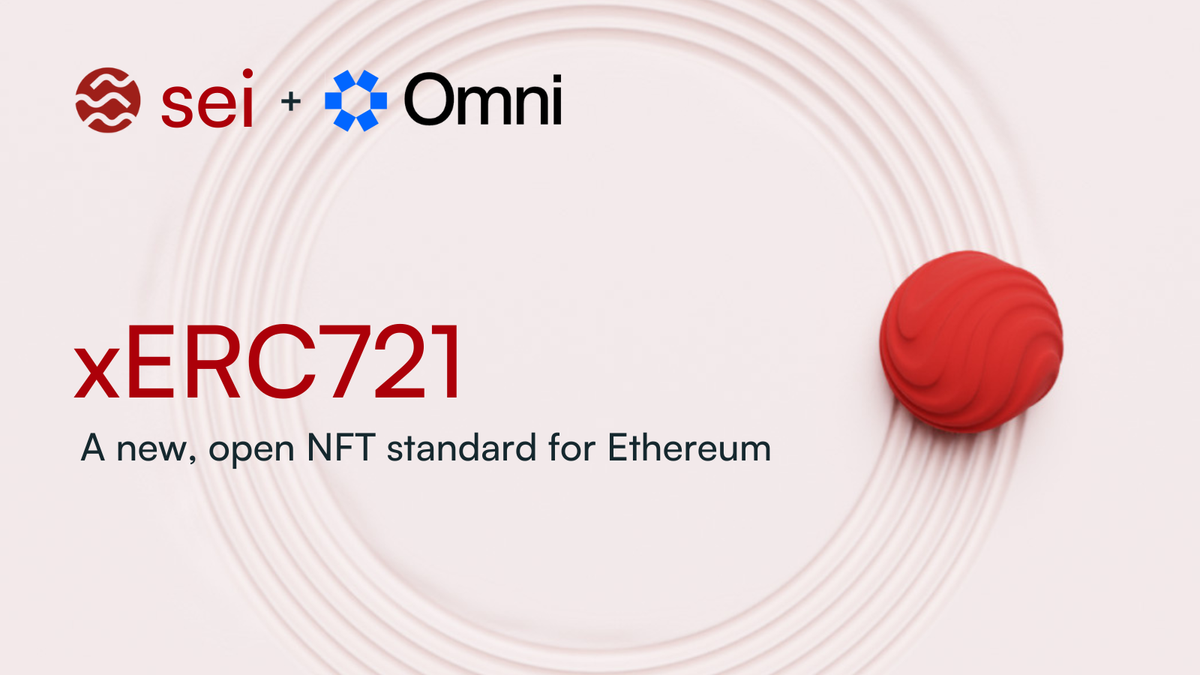Sei Labs and Omni Develop New EIP, to Unify NFTs across the evolving Ethereum Ecosystem

The problem for Ethereum NFTs
In recent years, many scaling solutions have been proposed for Ethereum to combat increasing gas fees and limited throughput. This includes the many flavors of Layer 2 rollup, to new highly performant scaling solutions for the EVM itself, such as parallelized blockchains. However, it’s widely understood that this has been at the expense of composability between tokens, leading to a fragmented user experience and a variety of incompatible, proprietary bridging standards.
In particular, NFT communities are currently stuck on the smart contract platform of their original minting. This means that they are isolated to a very small subset of the market, or that their users are forced to pay extremely high gas fees on L1. This is primarily because the original standard was designed before the shift to Layer 2s as a scaling solution for Ethereum. To fully capitalize on the innovation currently happening within the Ethereum ecosystem, it's crucial to establish an open and neutral pathway for ERC721 tokens to seamlessly transition into new scaling solutions, such as Layer 2 solutions and high-performance EVMs, without compromising on security. In this way, users can benefit from cost savings and innovation, while expanding an NFT project’s reach to the broadest possible audience.
The Solution
As new contributors to the Ethereum ecosystem, both Sei and Omni believe that the ideal approach to tackling this problem is through building a public good, such as a new Ethereum token standard. In order to build transparency and trust around this new standard, and in line with the principles of open development, a collaborative Ethereum Request for Comments (ERC) process has been initiated. By taking this approach, both teams hope to see a more sustainable outcome for Ethereum in the long term, which will hopefully be further refined and developed over many years as the ecosystem further evolves.
You can participate in the discussion here: erc-7611
What is an xERC721?
The new xERC-721 NFT standard is proposed as a “code minimized” upgrade to the existing ERC-721. It liberates the creators and holders of NFTs from the confines of a single domain — expanding their opportunity to embrace the plethora of innovation and experimentation happening across the Ethereum ecosystem.
This change provides a few high level improvements:
- xERC721 tokens are able to securely move across multiple domains without introducing unnecessary risk or dependence on any privileged third party (“vendor lock-in”), such as a specific interoperability network, through the lockbox interface functions described here. In this way, it ensures that sovereignty remains in the hands of the NFT communities.
- xERC721 token contracts are extended with mintBatch and burnBatch function interfaces. This has been a point of pain for developers leading to the introduction of new standards like ERC-1155. This problem is exacerbated even further when programming across multiple blockchains as it introduces asynchrony and the cost of compensating an interoperability network for verifying and relaying the transaction.
- Existing NFT collections can simply upgrade to become xERC-721s through the deployment of a new portal contract that makes them accessible throughout the rest of the rollup ecosystem.
Why Did Sei Contribute to this Standard?
For the Sei Labs team, helping to develop this EIP with Omni as a contribution to the wider Ethereum ecosystem comes from a learned experience. Recent NFT activity on Sei has been encouraging, with creators and communities from various ecosystems coming together and launching new collections, attracted by Sei’s innovative tech stack. However, the problem of fragmentation has become increasingly clear to the Labs team. This proposal is designed to address exactly this issue, both among NFTs and their corresponding communities.
As more scaling solutions for Ethereum are proposed, more and more borders, friction points and trust assumptions will be introduced. Normal users should not have to compare and assess various proprietary bridging standards; they should be able to leverage neutral protocols designed to ensure sovereignty of their NFTs when navigating the Ethereum ecosystem.
Both Sei Labs and the Omni Foundation are committed to openness, transparency, and community-driven development. We invite the wider Ethereum ecosystem to debate, refine, and eventually implement this for the benefit of the community as a whole, to reduce unnecessary fragmentation and trust assumptions when transferring NFTs between the many new sub-ecosystems forming around Ethereum.
This EIP in combination with EIP-7281 are just the beginning of an open suite of standards for the Ethereum ecosystem as we embrace a more “fragmented” ecosystem. By utilizing standardized interfaces we can not only establish more rigorously tested developer tooling that can be used for all digital assets, we also open the opportunity for other standards to be introduced that further improve upon the functionality available to issuers of digital assets without requiring bespoke integrations.
You can find more information and contribute to the discussion here: https://ethereum-magicians.org/t/erc-7611-sovereign-bridged-nfts/18487
